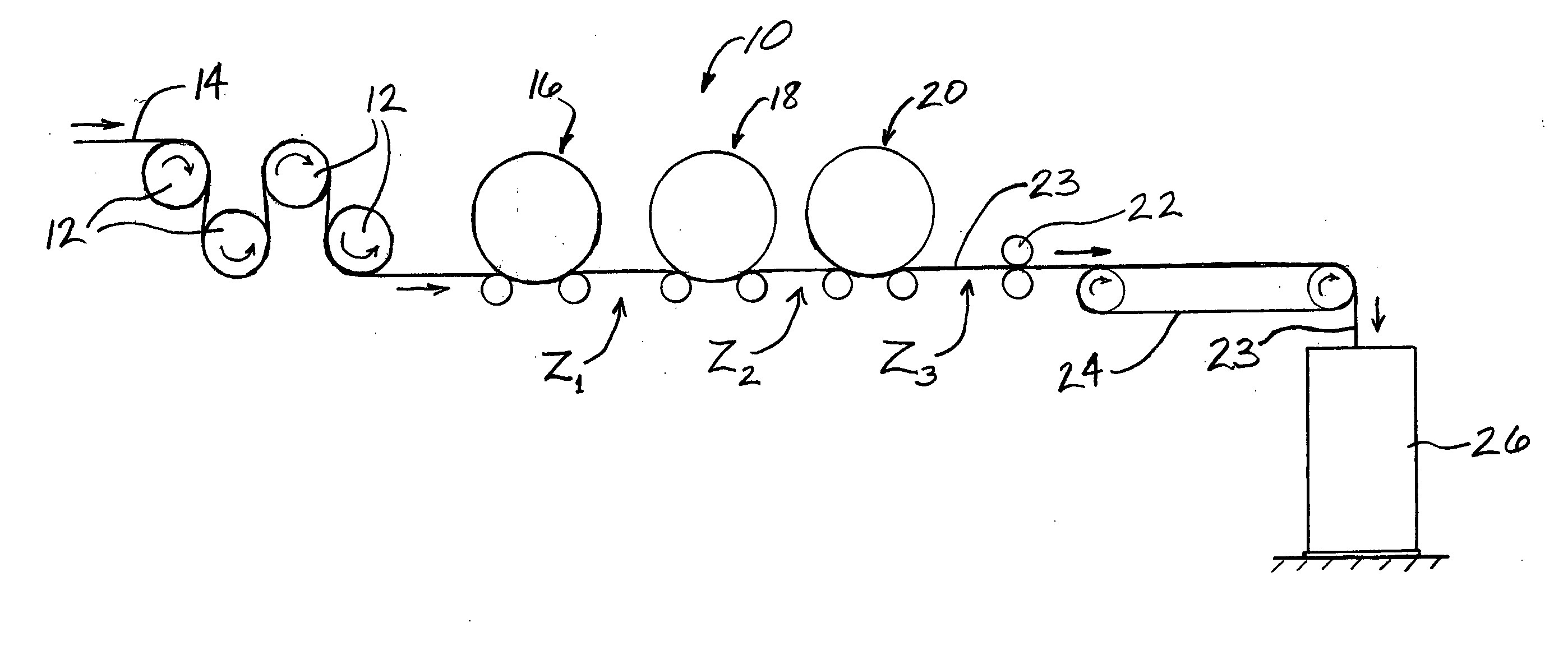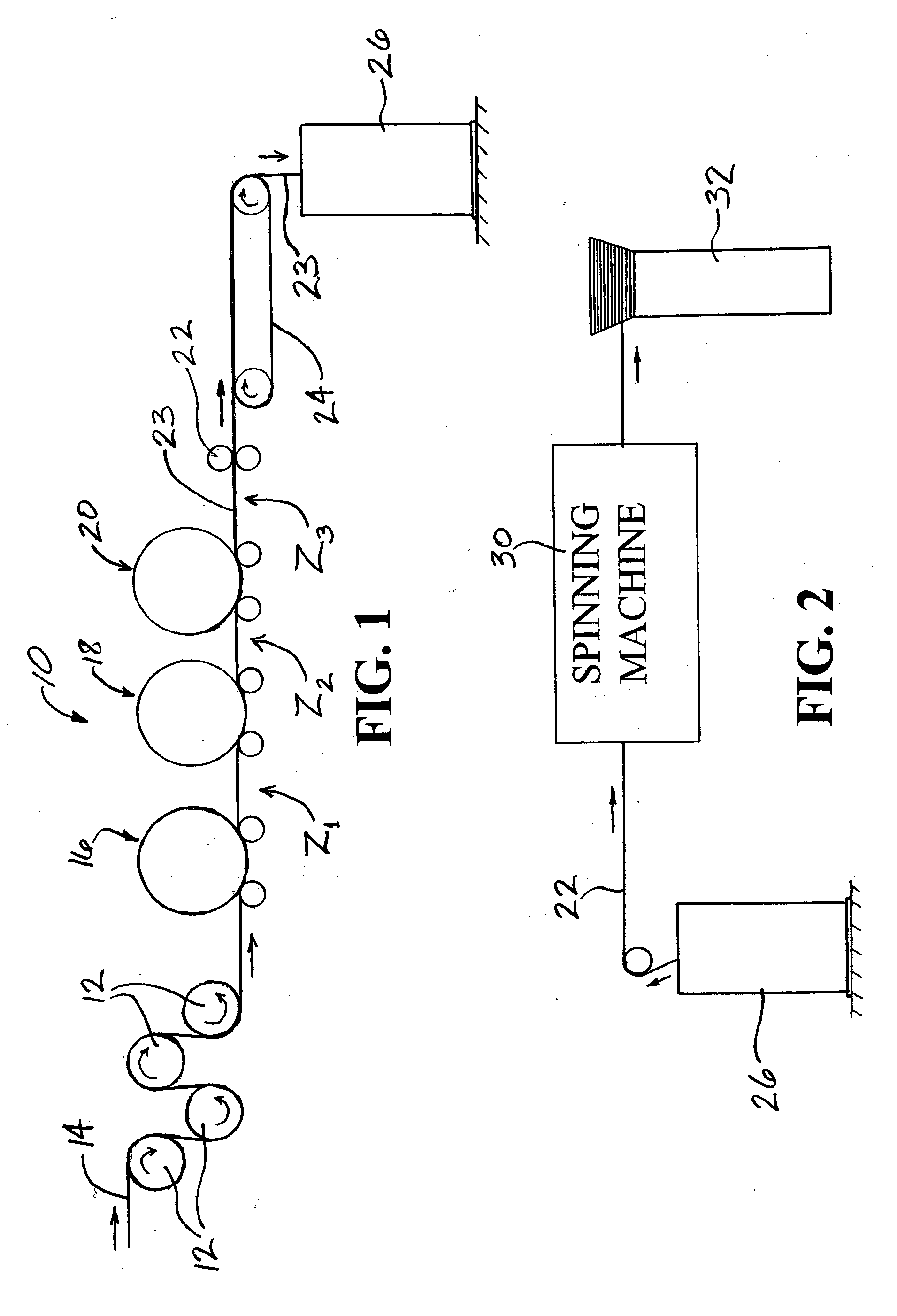High-strength spun yarn produced from continuous high-modulus filaments, and process for making same
a technology of high-modulus filaments and high-strength spun yarn, which is applied in the direction of yarn, tow to slivers/yarns, textiles and paper, etc., can solve the problems of inferior quality and uniformity of the staple yarn produced, the shear strength of the spun yarn can substantially exceed that of comparable continuous-filament yarn, and the damage to the staple fibers is minimized, so as to improve the overall throughput
- Summary
- Abstract
- Description
- Claims
- Application Information
AI Technical Summary
Benefits of technology
Problems solved by technology
Method used
Image
Examples
example 1
[0027] Fortafil X0219 carbon filament (80 k, 40,000 denier) tow was fed to the Godet rolls of a Seydel Stretch-Break Converter machine from a roller-type creel arrangement. The tow strand was subjected to a 1.18 draft ratio between the Godet rolls and the first pair of nip rolls, followed by drafts of 1.24 and 1.30, respectively, in the two stretch-breaking zones, exiting onto the delivery belt with a draft of 1.07. The total draft ratio thus was about 2.0. The staple fibers were delivered into sliver cans. The sliver was fed into the back roll of a ring spinning frame with draft rolls set to deliver a 7 / 1 cotton count spun yarn having 6.0 turns per inch of Z-twist. Subsequently, two ends of the yarn were plied together with 4.6 turns per inch of S-twist. The resulting 7 / 2 cotton count yarn was without torque and yielded tensile and flexural properties that were nearly equivalent to filament carbon yarn, and shear properties that were far superior to comparable filament carbon yarn,...
PUM
| Property | Measurement | Unit |
|---|---|---|
| lengths | aaaaa | aaaaa |
| length | aaaaa | aaaaa |
| length | aaaaa | aaaaa |
Abstract
Description
Claims
Application Information
 Login to View More
Login to View More - R&D
- Intellectual Property
- Life Sciences
- Materials
- Tech Scout
- Unparalleled Data Quality
- Higher Quality Content
- 60% Fewer Hallucinations
Browse by: Latest US Patents, China's latest patents, Technical Efficacy Thesaurus, Application Domain, Technology Topic, Popular Technical Reports.
© 2025 PatSnap. All rights reserved.Legal|Privacy policy|Modern Slavery Act Transparency Statement|Sitemap|About US| Contact US: help@patsnap.com



